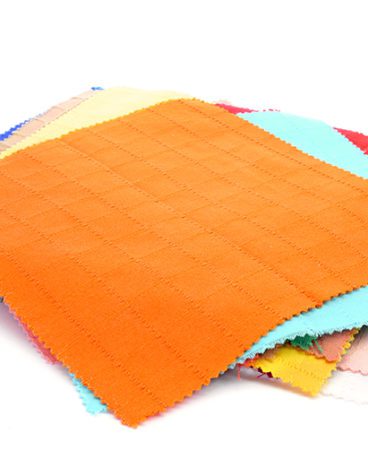We know there’s no universal approach when it comes to
retail paint—or any industry for that matter. That’s why at Datacolor, we have a global team of experts trained to meet the needs of paint companies around the world, from North America to Europe to Asia and beyond.
We talked to three of our retail paint experts about the industry in their regions and how the regional differences make this industry that much more interesting.
Let’s introduce our three experts:
- Jason Loehr, a product manager based in the United States
- Rik Mertens, an applications manager based in Belgium
- Holly Ling, an applications manager based in China
How does retail paint work in your region?
Jason Loehr: In North America, we have different options for purchasing paint. First, we have the paint manufacturers that have their own stores [PPG or Sherwin Williams for example]. Secondly, we have what we call dealer stores [like Ace Hardware or True Value]. These are stores that sell paint from different brands, but also other things contractors use [such as tools or building supplies], or home owners would need for DIY projects.
Stores will have a spectrophotometer and software so they can custom match paint colors for their customers. This means a customer can come in with a sample (this can be a piece of a floorboard, fabric or painted wood, etc…), have it measured and get a custom color match. The database in Datacolor Paint software is able to calculate what pigments go together to make that exact color.
Rik Mertens: In Europe (and Asia), most paint stores are owned by paint manufacturers who decide what color measurement tools the store will use and what they sell. There are also independent distributors and shops, but they always have very good relationships with the manufacturers.
Another thing that is different from the retail paint industry in North America is that 85% of dispensed paint comes from formula book look-up. A painter comes to the shop with the color they want and mostly have a reference number for the color they want, which the store employee then uses to look up the formula in their software and dispense the paint.
Two exceptions: In Italy and the UK, many paint shops have high-end spectrophotometers and provide their customers a custom paint color match.
Holly Ling: Compared to the market in North America and Europe, the Chinese retail paint market is still very young. All dispensed paint comes (similarly to Europe) from formula book look-up. A customer will come to the shop with a sample of the color they want or pick a color from the fan deck or color boards they have in the store.
Chinese consumers are also not the DIY kind of people and will mostly ask a professional painter or contractor to help them with their home decorations. But remarkably, they do know the paint brands available and will ask the painter to use a certain brand of paint or hire a painter that is connected to the paint brand.

What are the upcoming trends you see in your region?
Rik: Low-cost devices are becoming more and more popular in a retail paint environment. It’s an ideal way for paint manufacturers to link painters to their brand. If a painter uses a low-cost look-up device that has the fan decks of a particular paint brand, they will more likely pick that brand for a job. It will generate more sales and customer satisfaction. It’s something our own ColorReaderPRO can help with.
Something else we see, is that consumers expect a fast service. A store needs to have tablets or smartphones where customers can pick the color they want and then have it automatically dispensed. A lot now is also done online. Consumers can upload pictures of their living room to a website and apply colors on virtual walls. This also makes it easier for them to order paint and even have it delivered to their doorstep.
But what paint manufacturers and color management companies like Datacolor really have to take into account is that the future is the cloud. People want clever devices that make seamless communication possible between painters, consumers and paint shops. For example, the store owner wants to be able to send real-time data to the manufacturer. This way, when something is wrong, the manufacturer can react more quickly and send a technician if necessary.
Holly: Like in Europe, the customer is now looking for tailor-made colors and fast service. They want to go to a paint store, choose their color and get it dispensed in a matter of minutes. So, it’s also an opportunity for low-cost devices that can connect to their software.
Are there any common mistakes you see from retail paint stores in your region (or any region)?
Rik: Sometimes paint retailers buy a spectrophotometer which costs a lot of money, but don’t know how to properly use it. They will start measuring samples without proper training on how to use the instrument and the software. Without the proper training, they are more likely to make mistakes and this will cost time, money and resources.
Jason: Another common mistake we see is that a paint shop doesn’t store its customer’s formulas. There are many situations where people go into a store, choose a color, paint their walls and a few months later come back to the shop because they need extra paint for a touch-up. The only problem is, they don’t remember the color and the shop didn’t store the formula. This can easily be avoided by digitally storing the paint formula with the customer name in the software.
How important are sustainability efforts?
Rik: It’s getting more and more important. At the last European Coating Show, people were talking more and more about eco-friendly paint, natural paint and paint without any additives.
Holly: In China, it’s also related to people’s health. After a room has been (re)painted, they want to take it back into use as soon as possible without the smell of the paint chemicals. Because of this, paint manufacturers are pushing their environmentally friendly paint.
Jason: Over the past 20 years the sustainability agenda in North America was mostly driven by government regulations. However, there’s been a fundamental shift in the societal demand for responsible business behavior and with that, paints with low or no VOCs (volatile organic components) without loss of product quality.

It’s safe to say that there is no all-in-one solution for all the different regions. In North America, customers are used to custom matching, in Europe and Asia, we see that electronic formula book look up is the go-to option. But what we can agree on is that all over the world, in-store color management solutions are evolving constantly, and so are the needs of the customers. And at Datacolor, our global experts are ready and happy to help you find the solution that fits your needs.
If you don’t use in-store color management solutions yet and want to know how much time and money you can save, calculate your return on investment here.
Chat with an Expert







